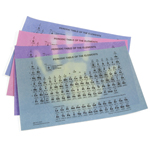 by: Tami O’Connor
by: Tami O’Connor
Though I am no longer in a traditional classroom, the end of each August still fills me with that feeling of eager anticipation and yes, even a bit of anxiety…. Then I remember, I’m not going to be facing a room filled with bright new faces nor will I need to develop the plethora of creative lesson ideas necessary to engage and stimulate young minds. But still, I enjoy sharing some of the school experiments that my students and I enjoyed.
One school activity I used to teach the scientific method required the use of an old favorite; Sodium Polyacrylate. This is the chemical powder found in disposable baby diapers. I would start my lesson with a 3 Cup Monty game in which I used 3 opaque cups that were identical in every way except that two of the cups were empty and in the third I placed about 3 tablespoons of the water lock powder.
My shtick started with me talking about the importance of observation skills. I would explain the necessity of having a keen eye. Shortly after my speech I would pour about 1/2 of a cup of water into one of the empty cups. While encouraging my students to carefully watch the cup with the water in it, I would move the cups around fairly slowly, knowing they would be able to follow the water filled cup easily, until the three cups ended in a line across my desk. Read the rest of this entry »
 by Tami O’Connor
by Tami O’Connor


 Posted by Tami O'Connor
Posted by Tami O'Connor 
